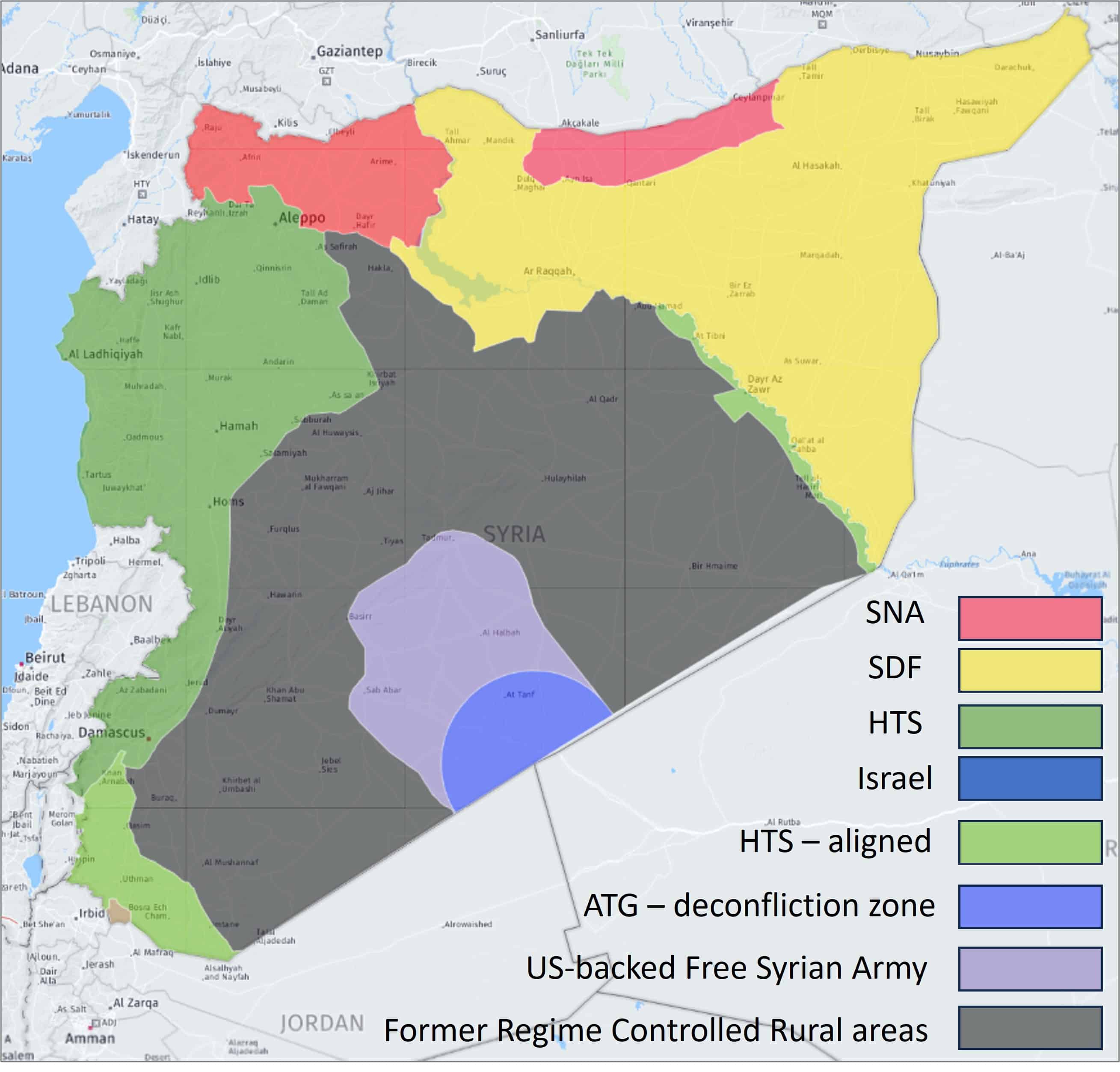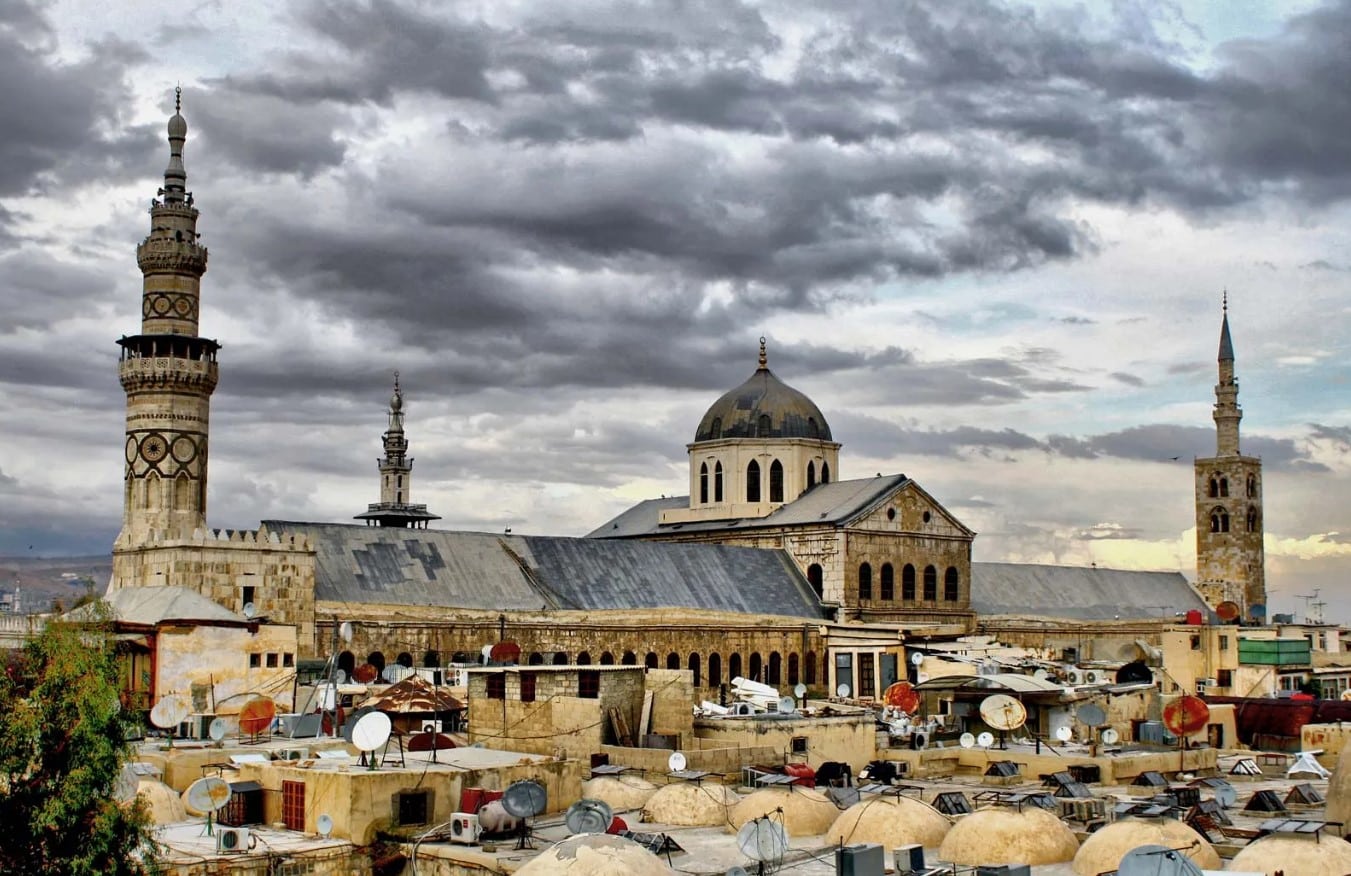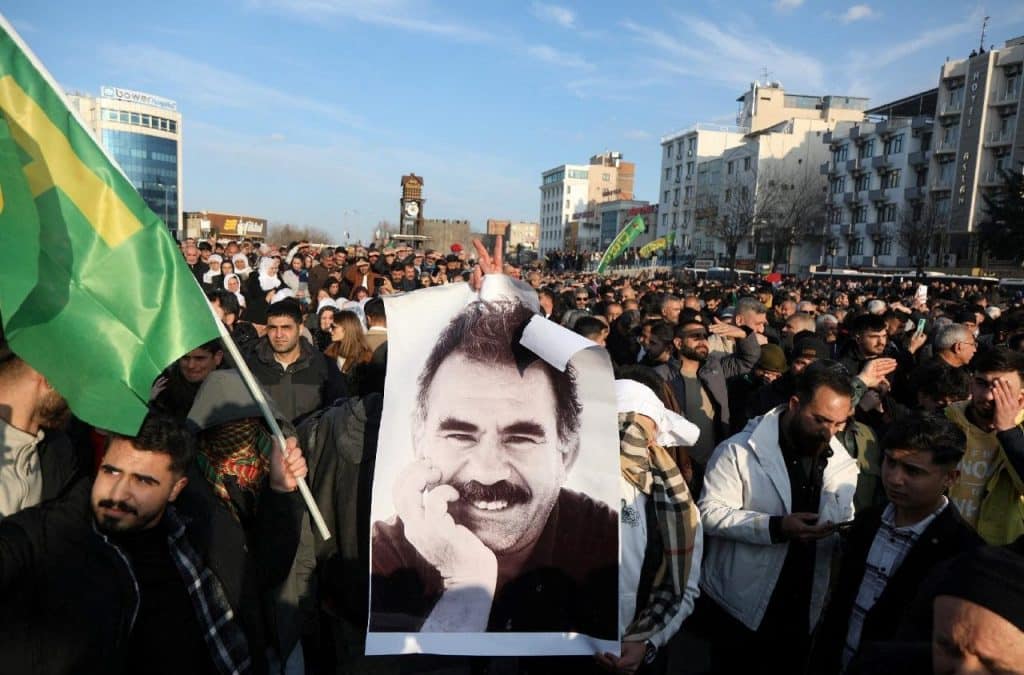Weekly Incident Map
The service will be provided for our existing subscribers for free for a limited time period and then offered as a separate, stand-alone product outside your regular subscription. For inquiries regarding prices for a subscription, or the availability of bespoke reporting on Syria – including in-depth reports, risk assessments and incident data – please email [email protected]. Please also contact us if you are interested in transportation or other security services in Syria. In the meantime, please enjoy this complimentary service.
Executive Summary
-
Tensions with Druze community escalated in Jarama area
-
Israel threatens intervention as airstrikes intensify
-
HTS announce formation of constitutional committee
-
Syrian resistance claims attack against HTS in Latakia
-
SDF supports PKK ceasefire but disassociates itself from group
Tensions with Druze community escalated in Jarama area
Tensions escalated this week in the Jaramana area, southeast of Damascus, between the HTS-linked Public Security Service and armed Druze factions. The town is predominantly inhabited by members of the Druze community – an Arab religious group that adheres to the Druze faith and is native to Lebanon, Israel and Syria. The clashes began on 1 March when one of the armed Druze factions established a checkpoint in the area. The accounts differ but local reports stated that members of the HTS-linked Public Security Service were stopped at the checkpoint and asked to surrender their weapons, prompting an altercation that resulted in the death of one member of their team and the kidnapping of another. A conflicting version claimed the victim had visited relatives in the area and was killed without provocation, while a third account claimed the Public Security Service was deployed to quell a pro-Israeli demonstration.
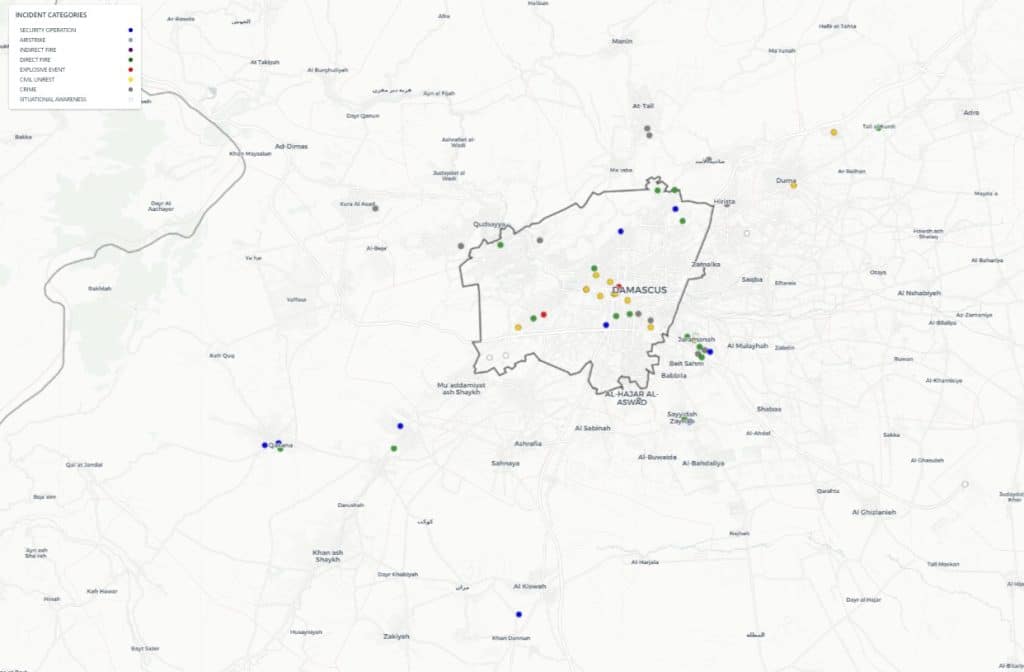
Damascus weekly incident map – click here for interactive map
Regardless, the death of the HTS-linked security force member sparked an escalation in tensions over the following days, with both sides mobilizing reinforcements and armed clashes reported on 2 March. A delegation of Druze elders led by Laith al-Balaous, leader of the Men of Dignity, from the Suwayda Province, arrived on the same day to commence negotiations with the HTS and then managed to secure the release of the kidnapped security force member. An agreement was also reached to de-escalate and allow the HTS security forces to deploy into the area, with the situation calming down on 3 March.
The episode highlights and follows an assessed increase in broader tensions between the new Syrian government and the Druze community – tensions undeniably influenced and stoked in part by Israeli pledges to protect the Druze community in Syria (see below). The Druze community and associated armed factions have, like the Syrian Democratic Forces in the North East, been reluctant to integrate into the new Syrian Army and appear resistant to efforts by the interim government to disarm local militia groups. Prior to the escalation this week, a coalition of armed Druze factions announced the establishment of the Suwayda Military Council which consists of approximately 62 groups based in the province. The Suwayda Council responded to the events on 1-2 March by mobilizing in support of the Druze residents in Jarama and while not explicitly stated, its formation forms an assessed act of defiance against the HTS.

Suwayda Military Council
Israel threatens intervention as airstrikes intensify
The discussed tensions in Jarama this week were compounded and stoked further by Israel’s threat to intervene to protect the Druze community in Syria – a threat that preceded the escalation on 1 March and sparked strong reactions in the days leading up to the events in Jarama. Earlier in the week, Israeli Prime Minister Benjamin Netanyahu stated that Israel would not allow the HTS to advance south of Damascus and that Israel would not allow the new government to infringe on the rights of the Druze community. Separately, Israeli Defense Minister Israel Katz reaffirmed Israel’s intent to maintain a military presence in southern Syria to protect its eastern border and prevent the entrenchment of armed groups that may threaten Israel’s security. The statements provoked strong reactions and demonstrations within both HTS-controlled areas and the southern provinces.
In response to the events in Jaramana, Netanyahu and other Israeli officials directed the IDF to “prepare to defend the Druze community” and reiterated calls for a demilitarization of southern Syria while explicitly threatening to strike the new government to protect the Druze community. In an official statement, Defense Minister Katz said on 1 March ”If the regime harms the Druze, it will be struck by us.”
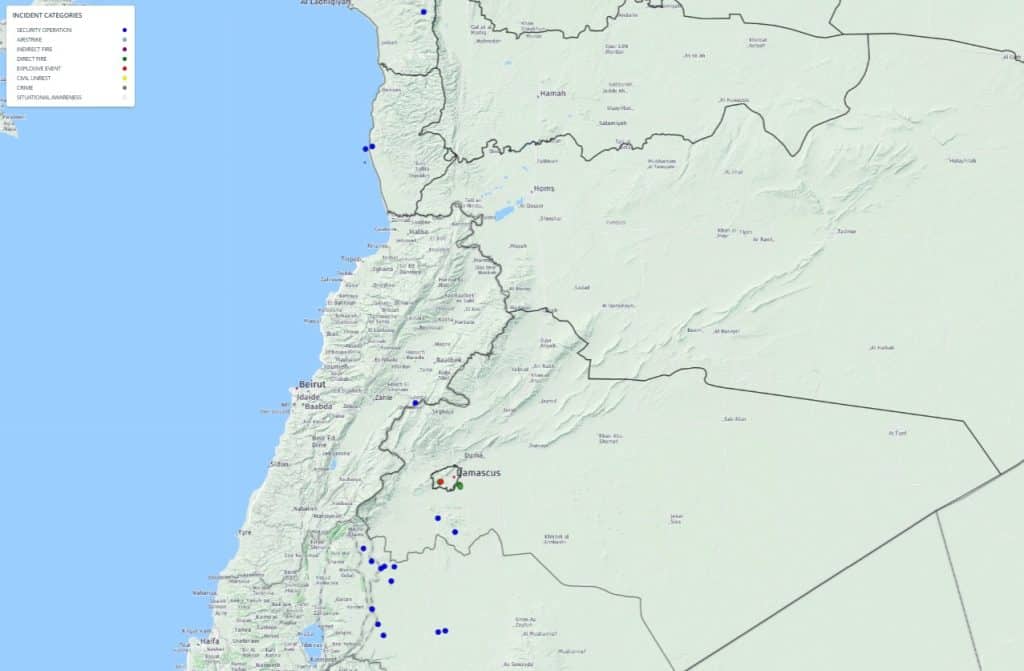
Map of Israeli airstrikes and Druze-HTS tensions – click here for interactive map
The HTS did not directly respond to the comments and the subsequent de-escalation in Jaramana has temporarily reduced the outlook for an escalation in Israel’s involvement in Syria. That said, the surrounding rhetoric is a source of concern that risks escalating local tensions between the HTS and the Druze factions involved to a regional level. The Israeli remarks have also prompted reactions from other regional stakeholders, including Turkey and Saudi Arabia who have accused Israel of seeking to destabilize Syria while condemning its territorial incursion in the south. It is worth noting that the Druze community in Syria is highly diverse and factitious, comprising a wide spectrum of local community leaders whose regional and political allegiances differ. Responding to Israel’s rhetoric this week, some Druze leaders have reacted negatively and accused Israel of destabilizing the south and stoking sectarian tensions.
In a related development, Israeli airstrikes continued this week to target sites across southern Syria and HTS-controlled areas. These notably included operations in the Tartous province on 3 March as well as in western Homs and the Damascus countryside. The targets included military sites associated with the former regime as well as smuggling routes and illegal border crossings allegedly used by Hezbollah. The strikes against former regime assets form a continuation of Israeli-led efforts to degrade Syria’s conventional military capabilities and to prevent these assets from becoming operational in the future. Currently, the HTS is assessed to lack the capability and manpower to make use of much of the equipment targeted by Israeli forces, but the strikes form part of an assessed preventive effort by Israel to maintain a weak neighbor to its east.
HTS announce formation of constitutional committee
In a significant domestic political development this week, the interim government led by President Ahmed al-Sharaa announced the formation of a constitutional committee tasked with drafting a “constitutional declaration” to regulate the country’s “transitional phase.” The formation of the seven-member committee is based on recommendations made during the National Dialogue Conference held last week in Damascus. Speaking to the press on 3 March, members of the committee said the committee will prepare a declaration that will set out and define the principles of governance of the new Syria, including defining the powers of the executive, legislative and judicial branches. The declaration will eventually be supplanted and likely serve as the basis for a future constitution.
The announcement of the committee was met with negative reactions from several Kurdish factions who again accused the HTS of excluding Kurdish participation and ignoring the need for consultations with the main Kurdish factions. At least one member of the committee is reportedly Kurdish but not affiliated with any of the main factions and the selection of the committee was swiftly criticized for that reason. Similarly, the National Dialogue Conference was dismissed as “meaningless” in a document signed by 35 Kurdish political parties in its aftermath. The UN said separately that it was not involved in the formation of the constitutional committee but that it supports Syria’s transition in accordance with the principles of UNSC resolution 2254.
Syrian resistance claims attack against HTS in Latakia
Meanwhile, tensions continue to be reported within HTS-controlled areas associated with support for the former regime. Further to the discussed clashes in the Jarama area of Damascus this week, the Syrian Resistance claimed responsibility for an attack against HTS-linked security forces in Latakia that killed two members of the Defence Ministry. The attack took place overnight between 3 and 4 March, when assailants detonated a hand grenade followed by gunfire against a security patrol in the city. Syrian state-linked sources blamed the attack on “Assad militia remnants” and the HTS responded by launching a sweep operation in the area on 4 March.
The attack follows an assessed uptick in hit-and-run attacks against security patrols, checkpoints and individual soldiers in the Latakia province in recent weeks – in a potential sign of growing anti-government resistance.
Last week, remnant elements also targeted a police station in the town of Qadaha which, like Latakia city, was a former regime stronghold and still associated with support for the former regime. So far, this violence remains on a local level and has yet to morph into more organized forms of resistance. The capabilities utilized also remain largely unsophisticated, comprising small arms attacks, hand grenades and other light weaponry, conducted predominantly overnight. That said, indications of more sophisticated and coordinated attacks should not be discounted based on recent developments. For clients transiting the province, the outlook for attacks on checkpoints and security patrols forms a security consideration that warrants caution, while increased security deployments and checkpoint scrutiny are likely to follow any future hostile activity.
SDF supports PKK ceasefire but disassociates itself from group
The Kurdistan Workers Party (PKK) declared an immediate and unilateral ceasefire this week following a call from PKK co-founder Abdullah Ocalan for the group to lay down arms and dissolve on 27 February. In a statement on 1 March, the PKK People’s Defence Center said the ceasefire is valid for “all forces, including all autonomous units” and in the same statement orders all forces to redeploy on a “defensive basis” only. The call was widely hailed and praised as a historic opportunity, and has understandably raised expectations and hopes for a permanent peace between the PKK and Turkey, and a restart of the peace process that was ended in 2015. The Turkish government welcomed the call and President Recep Tayyip Erdogan said the government is “open to dialogue” with the PKK. Pro-Kurdish parties in Iraq, Syria and Turkey also welcomed the ceasefire announcement and expressed willingness to facilitate its implementation and the related dialogue. In Iraq, a reduction in PKK-linked hostilities has been noted since 1 March, with only limited engagements noted. This indicates that while uncertainty prevails, PKK-linked factions appear to initially respect and adhere to the ceasefire call.
The implications in northeastern Syria remain less certain and so far the ceasefire does not appear to involve or encompass the Syrian Democratic Forces (SDF) which has long maintained its distance from the PKK. Responding to the announcement by Ocalan on 27 February, SDF Commander Mazloum Abdi called it a positive development and expressed support for the call, but also said it “was not for us” as the SDF does not take its direction from the PKK.
The implications of the ceasefire on the development of the ground have since been mixed, with an initial reduction in hostilities in eastern Aleppo province witnessed on 1 and 2 March that appeared attributed to the PKK-linked ceasefire. The activity has since increased however as intense frontline exchanges and clashes were reported on 3 March, when the SDF claimed the Turkish-backed SNA and Turkish conventional forces conducted multiple assaults, backed by artillery and airstrikes. These engagements do not appear to have been initiated by the SDF however, potentially indicating a more defensive posture since the 1 March announcement.
Regardless, Mazloum’s remarks appear intended to disassociate the SDF from the PKK ceasefire, and while the ceasefire undeniably sets conditions for a reduction in hostilities and is assessed as a positive indicator, the SDF-SNA conflict remains largely a separate issue in need of its own conflict resolution. Moreover, the status and reliability of the PKK ceasefire remains somewhat in question and the Turkish government’s position remains subject to further clarification.
Notably, the ruling Justice and Development Party (AK Party) stated on 3 March that there are no negotiations ongoing with the PKK, and on 28 February, the Turkish Minister of Justice Yilmaz Tunc said there is no discussion on amnesty, house arrest, or other options for Öcalan. This understandably raises questions over what the PKK is expecting to achieve in return for declaring the ceasefire and whether the unilateral declaration by the group is sustainable.
Control of Terrain Map – February 2025
